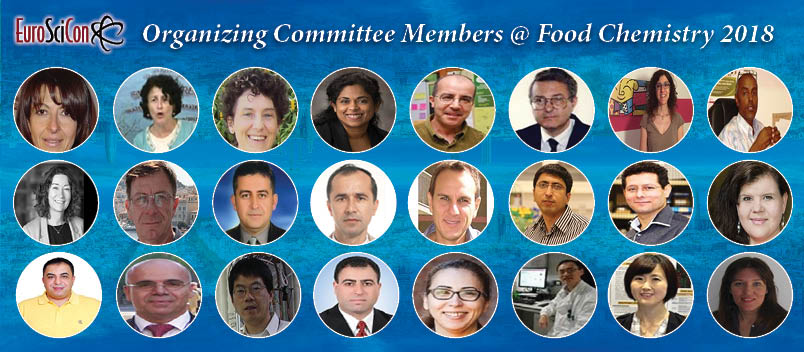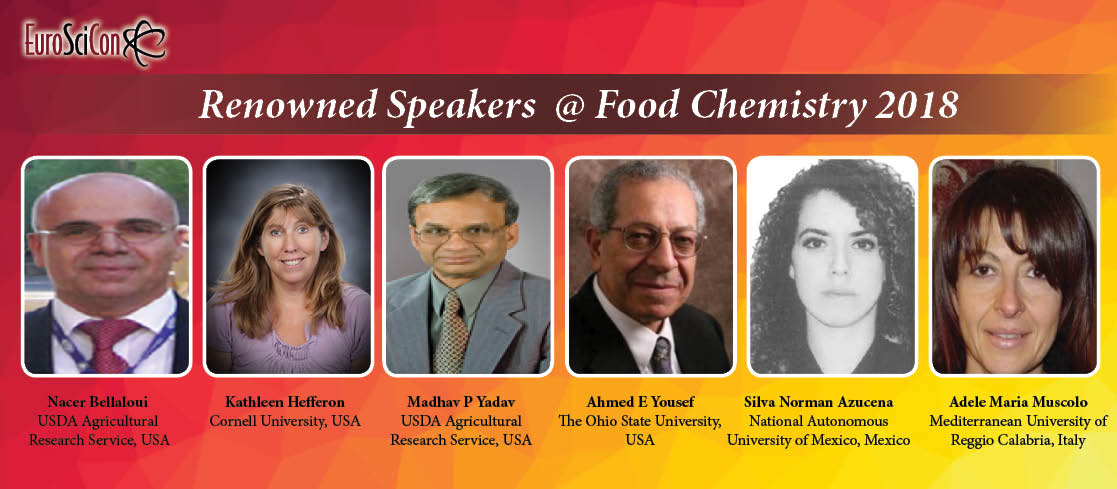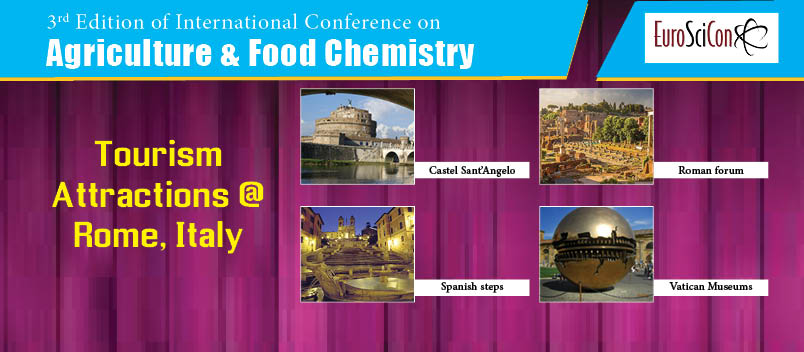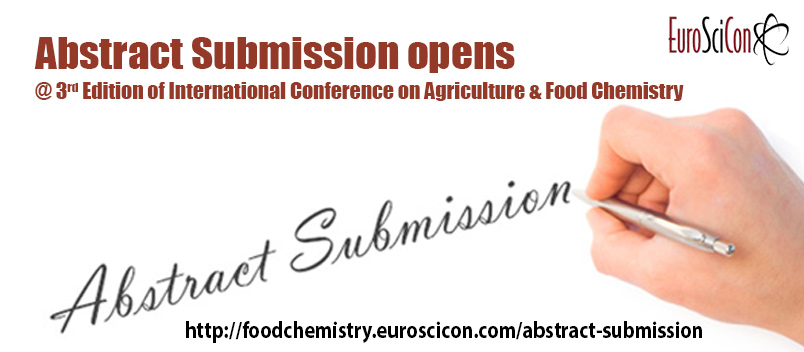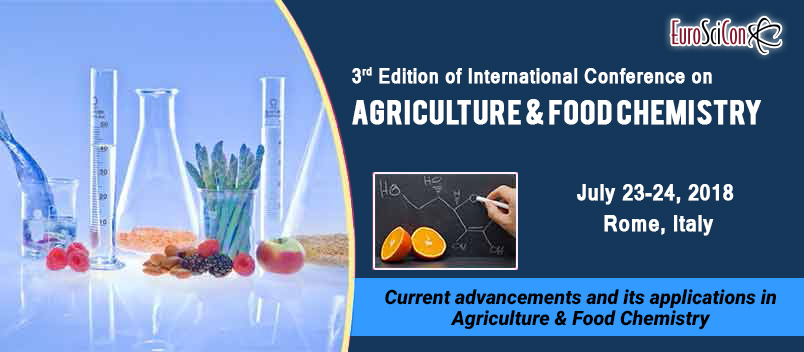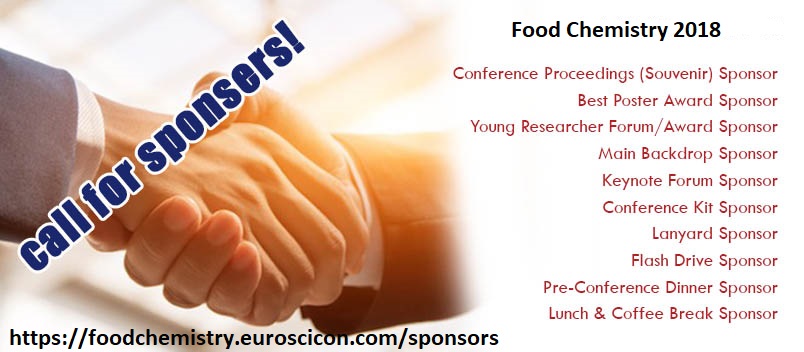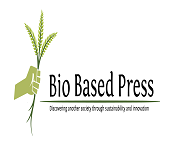Food Chemistry 2018
About Conference
EuroSciCon invites all the participants from all over the world to attend “3rd Edition of International Conference on Agriculture & Food Chemistry” during July 23-24 2018 at Rome, Italy which includes prompt Keynote presentations, Oral talks (Speaker forum and Young research forum), Poster presentations, Workshops and Exhibitions.
Agriculture & Food Chemistry 2018 is a global overview the Theme: "Current advancements and its applications in Agriculture & Food Chemistry" which brings together persons particularly interested in the chemistry of agricultural and food products, both raw and finished; to foster programs of general papers and symposia on special topics dealing with this field of chemistry; to promote such other activities as will stimulate activity in and emphasize the importance of research in agricultural and food chemistry. Our conference provides quality, timely Symposium at International Conference on Agricultural & Food Chemistry.
Goals:
Develop focused and timely programs, products and services that engage those involved in agriculture, food chemistry, and related fields.
Enhance communication and market our programs, products, and services more effectively.
Expand global impact by developing the infrastructure to deliver technical programming for targeted international audiences.
Target Audience for Agricultural & Food Chemistry 2018:
Programs are of interest not only to chemists, but to biochemists, biologists, agronomists, plant physiologists, molecular biologists, agricultural engineers, chemical engineers, material scientists and food scientists. Technical focus is on agriculture, renewable resources, food composition, food quality, food processing, nutrition, biochemistry, food safety, food flavor, biotechnology, natural products, pharmaceuticals, green products, chemical raw materials and feedstocks, bioenergy, and sustainability.
Objectives of the division are to encourage the advancement and understanding of agricultural and food chemistry; and to promote scientific interest and inquiry in agricultural and food chemistry by divisional meetings, professional contacts, reports, papers, discussions and publications.
About Sessions
Track 1: Agricultural and Food Chemistry
Agricultural Chemistry is a science concerned with means of affecting chemical and biochemical processes in the soil and plants, with the mineral nutrition of plants and with the use of fertilizers and other chemical means to improve soil and increase yield. Agricultural chemistry also deals with several other means of increasing yield, such as herbicides and growth stimulants, and serves as the scientific basis for introducing chemical processes into agriculture. In its aims, methods, and subject areas of research, agricultural chemistry is related to both the chemical and the biological sciences. It is also closely related to soil science, farming, meteorology, plant physiology and biochemistry, agricultural microbiology, physics, and chemistry. Its primary subdivisions are plant nutrition, the interaction of soils and fertilizers, evaluation of particular types and kinds of fertilizers and the methods of applying them, soil improvement by chemical means for example, the application of lime or gypsum—and research into and use of chemicals for weed control.

Agricultural chemistry today must carry out further practical and theoretical work in root nutrition in order to raise the coefficient of fertilizer consumption, develop methods to increase plant utilization of the soil’s nutrient elements, and develop new and better fertilizers. Scientific research in agricultural chemistry is being conducted at the central research institutes, at numerous zonal institutes and experimental stations, and in agricultural institutes and university biological and soil sub-departments, where personnel for this field are trained.
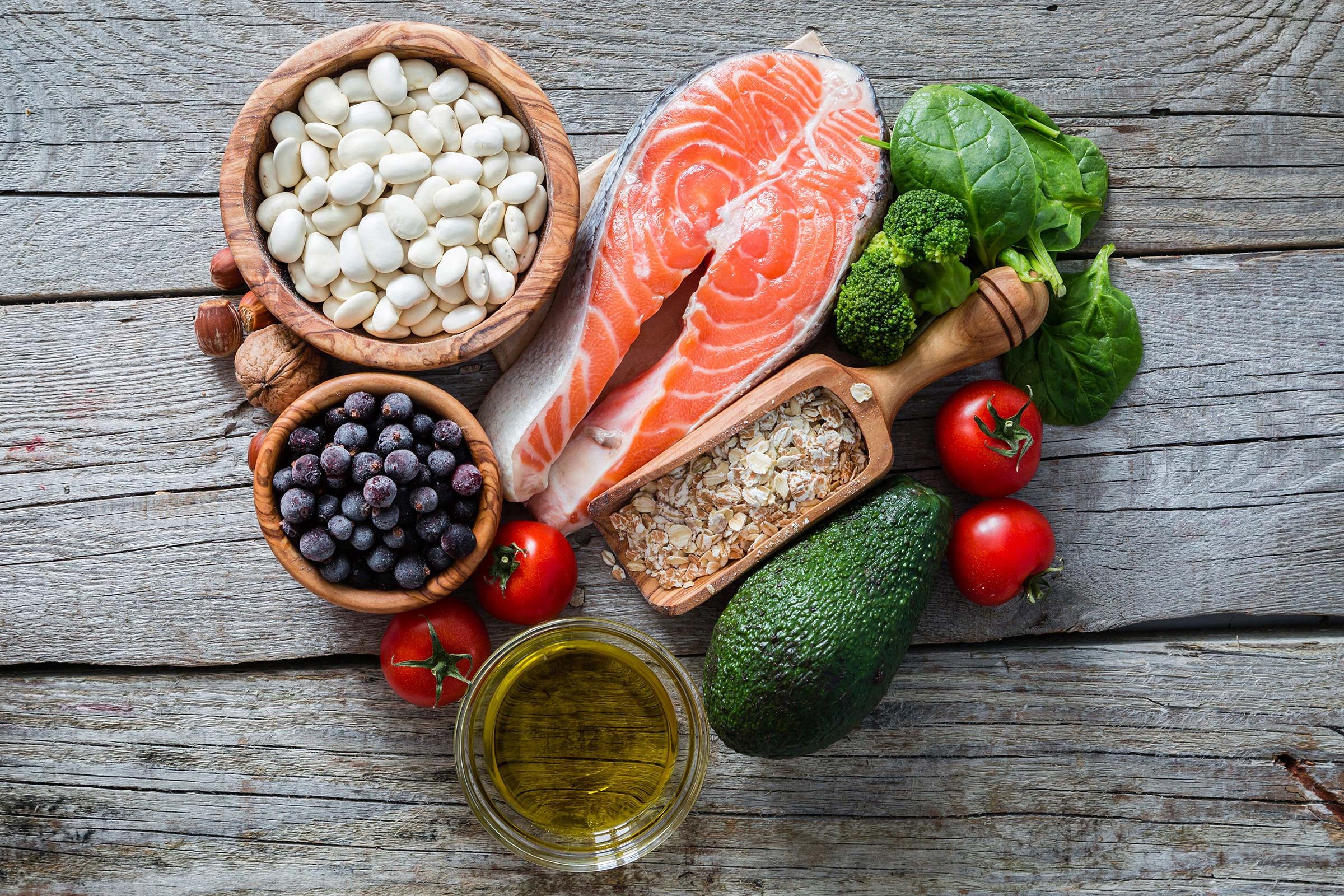
Food chemistry is the study of the chemical composition, processes and interactions of all biological and non-biological components of foods. It includes macro- and micronutrients, and the essential nutritional factors that determine the nutritional and energy value of food raw materials and foods. It also includes reactions related to amino acids, peptides and proteins, fats and other lipids, carbohydrates, vitamins, mineral substances and water which are responsible for odour, taste and colour that determine the quality of food materials and foods.
Track 2: Agricultural Chemical Science and Engineering

An agricultural chemical is an agricultural compound that is applied directly to or on plants for one or more of the purposes listed in the Agricultural Compounds and Veterinary Medicines (ACVM) Act 1997. Agricultural chemicals range from herbicides to plant growth regulators. Agricultural Chemical Compounds is defined as any substance, mixture of substances, or biological compound, used or intended for use in the direct management of plants and animals, or to be applied to the land, place, or water on or in which the plants and animals are managed, for the purposes of: managing or eradicating pests, including vertebrate pests; or maintaining, promoting, or regulating plant or animal productivity and performance or reproduction; or fulfilling special nutritional requirements; or the manipulation, capture, or immobilisation of animals; or diagnosing the condition of animals; or preventing or treating conditions of animals; or enhancing the effectiveness of an agricultural compound used for the treatment of plants and animals; or marking animals; and includes: any veterinary medicine, substance, mixture of substances, or biological compound used for post-harvest pest control or disinfestation of raw primary produce; anything used or intended to be used as feed for animals.
Track 3: Agronomy
Agronomy is the science and technology of producing and using plants for food, fuel, fiber, and land reclamation. Agronomy has come to encompass work in the areas of plant genetics, plant physiology, meteorology, and soil science. It is the application of a combination of sciences like biology, chemistry, economics, ecology, earth science, and genetics. Agronomists of today are involved with many issues, including producing food, creating healthier food, managing the environmental impact of agriculture, and extracting energy from plants. Agronomists often specialise in areas such as crop rotation, irrigation and drainage, plant breeding, plant physiology, soil classification, soil fertility, weed control, and insect and pest control.

This area of agronomy involves selective breeding of plants to produce the best crops under various conditions. Plant breeding has increased crop yields and has improved the nutritional value of numerous crops, including corn, soybeans, and wheat. It has also led to the development of new types of plants. For example, a hybrid grain called triticale was produced by crossbreeding rye and wheat. Triticale contains more usable protein than does either rye or wheat. Agronomy has also been instrumental in fruit and vegetable production research. Agronomists use biotechnology to extend and expedite the development of desired characteristic. Agronomists study sustainable ways to make soils more productive and profitable. They classify soils and analyze them to determine whether they contain nutrients vital to plant growth. Common macronutrients analyzed include compounds of nitrogen, phosphorus, potassium, calcium, magnesium, and sulfur. Soil is also assessed for several micronutrients, like zinc and boron. The percentage of organic matter, soil pH, and nutrient holding capacity (cation exchange capacity) are tested in a regional laboratory. Agronomists will interpret these lab reports and make recommendations to balance soil nutrients for optimal plant growth.
Track 4: Agricultural and Food Biotechnology and nanotechnology

The Food and Agriculture Section is responsible for developing and advancing industry policies on all plant and animal biotechnology issues related to international affairs, state and federal government relations, science and regulatory affairs, and media. Biotechnology in plant agriculture can improve crop insect resistance, enhance crop herbicide tolerance and facilitate the use of more environmentally sustainable farming practices. Biotechnology in animal agriculture is used to genetically engineer animals to improve their suitability for pharmaceutical, agricultural or industrial applications. This Food and Agriculture Section promotes agriculture biotechnology policies that will help feed a growing population of 9 billion by 2050.

Biotechnology in Agriculture and Food Processing: Opportunities and Challenges discusses how biotechnology can improve the quality and productivity of agriculture and food products. It includes current topics such as GM foods, enzymes, and production of various types of food ingredients as well as basic ones such as the concept of biotechnology, plant cell, and tissue culture. Combining coverage of agriculture and food processing, the book highlights the range of biotechnology applications from "farm to fork."

The book begins with the fundamental concepts of the role of biotechnology and genomics in agriculture and food processing. Building on this, it then focuses on specific applications of biotechnology in agriculture and includes chapters on plant cell and tissue culture techniques, genetic transformation in crop improvement, and the production of biofertilizers and biopesticides. The authors cover different aspects of biotechnology in food processing such as production of fermented foods, functional foods, enzymes in food processing, production of polysaccharides, production of sweeteners, biocolors and bioflavors, and genetically modified foods. They then examine the management of crop residues and by-products of agro-industries, comprising mushroom production and value addition to agro-industrial wastes and residues.

Biotechnology has been recognized as one of the key technologies for increasing economic growth. With chapters written by leading experts in this field, the book provides a better understanding of how biotechnology applications can reduce production costs, improve productivity, and enhance product quality in the agro food processing sector.
Features
Provides perspective on important biotechnological issues with direct relevance to agriculture and food processing
Illustrates biotechnological tools for increasing agricultural productivity
Presents a holistic view of all the aspects about interventions of biotechnology in agriculture and food processing
Explores the latest research and advances in the impact of biotechnology in agriculture and food processing
Track 5: Food Bioactives, Nutrition and Health

Except for nutrients, food contains small amounts of so called bioactive compounds. These compounds add value beyond nutrition, directly affecting physiological functions in our body by acting on cellular pathways. Epidemiologic studies, where the effects of a diet in different populations are observed, indicate that those who eat fruits, vegetables, whole grains and fish are likely to lead a long and healthy life. We know very little of which compounds that generate health effects and the mechanisms involved. We believe that the combination of compounds is important, and therefore a more positive health effect is expected from the ingestion of fish and whole grain products compared with isolated fish oil and separated bran fraction. Nutrition is the science that interprets the interaction of nutrients and other substances in food (e.g. phytonutrients, anthocyanins, tannins, etc.) in relation to maintenance, growth, reproduction, health and disease of an organism. It includes food intake, absorption, assimilation, biosynthesis, catabolism and excretion. The diet of an organism is what it eats, which is largely determined by the availability, processing and palatability of foods. A healthy diet includes preparation of food and storage methods that preserve nutrients from oxidation, heat or leaching, and that reduce risk of food-borne illnesses. A poor diet may have an injurious impact on health, causing deficiency diseases such as blindness, anaemia, scurvy, preterm birth, stillbirth and cretinism; health-threatening conditions like obesity and metabolic syndrome; and such common chronic systemic diseases as cardiovascular disease, diabetes, and osteoporosis.
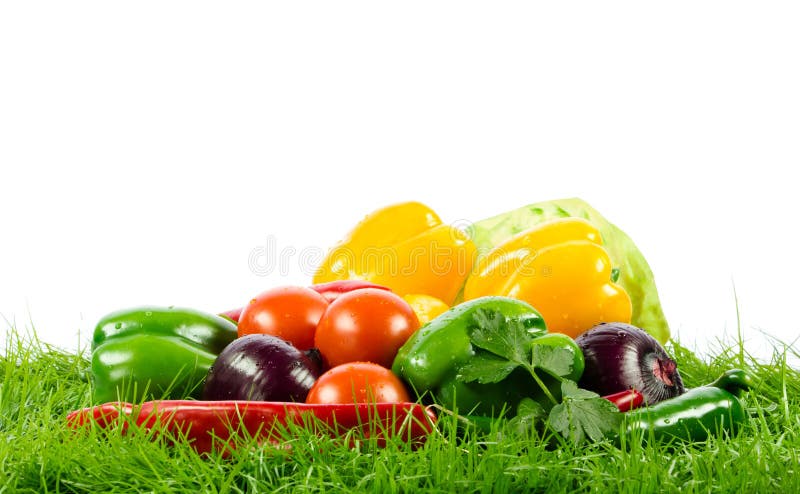
Various specialists working in different areas of food science for which food chemistry is relevant. It is worthy to mention such areas as: bioactive food components and chemistry behind their health-promoting action, analytics and monitoring of food components upon processing, biotransformation and bioavailability of food components, design of functional foods based on the knowledge of chemical and biological properties of bioactive ingredients

Soya protein is a major component of the diet of food-producing animals and is increasingly important in the human diet. However, soy protein is not an ideal protein because it is deficient in the essential amino acid methionine. Methionine supplementation benefits soy infant formulas, but apparently not food intended for adults with an adequate nitrogen intake. Soya protein content of another essential amino acid, lysine, although higher than that of wheat proteins, is still lower than that of the milk protein casein. Adverse nutritional and other effects following consumption of raw soybean meal have been attributed to the presence of endogenous inhibito
Market Analysis
The global agriculture market to reach approx. US$ 7.9 billion by 2022 growing at a CAGR of 16%. Agriculture involves the smart usage of technology to enable better decision making and optimized use of resources on farming. Precision agriculture can stand to be a key to achieve higher yields and to effectively tackle the rising food demand. Precision farming, involves deployment of a web of sensors, drones and software to gather, process and analyze data to derive actionable insights for on-farm decisions. Worldwide agriculture market research report considers the present scenario and growth aspect of worldwide precision agriculture market for the period 2017−2022. It includes the market growth drivers, trends, and restraints and provides an in-depth analysis of the market size of the major regions and key countries. It also analyzes leading five vendors and ten other prominent vendors in the precision agriculture market.
According to market research report, “Global Organic Food Market By Product Type, By Region, Competition Forecast and Opportunities, 2011 – 2021”, global organic food market is projected to grow at a CAGR of over 14%, during 2016-2021, on account of rising disposable income coupled with growing awareness among consumers about health benefits of consuming organically produced food. Additionally, rising internet penetration, aggressive marketing strategies by major companies and easy availability of these food products on the back of robust distribution network are projected to boost sales of organic food across the globe. In 2016, about 43.7 million hectares of agricultural land was under organic cultivation, which was managed by over 2.3 million producers across the globe. Moreover, leading players operating in global organic food market are offering these products in environment friendly packaging to lure consumers.
Scope of the Report:
This market research report categories the global agriculture market based on component, application type and geography. The report provides the market size in terms of revenue.
Increasing automation in the agriculture process owing to the labor crisis such as lack of skilled farmers and aging farmers are also expected to have the positive impact on the agriculture drone market growth. A favorable shift in the regulatory policy is also expected to allow start-ups to operate in small and large farming operations and aid in disease & water management.
Increasing technological advancements in equipment and need for enhancing the quality of the farming techniques have led increased implementation of agriculture drones are expected to drive the industry growth over the forecast period. Further, innovations in the GPS mapping field coupled with the advancements of solar power drone in agriculture sector is further fuelling the demand for agricultural drones. Drones have the potential to implement better plantation with crop rotation strategies and give crucial inputs related to the daily progress of crops which is further contributing to the market growth.
North America and Europe dominated global organic food market and accounted for a cumulative revenue share of around 80% in 2015. These regions are expected to generate significant demand for organic food products through 2021, due to rising disposable income levels and well developed distribution network to ensure availability of a wide variety of organic food products. Additionally, organic fruit & vegetables dominated global organic food market in 2015, as these products are cultivated without the use of chemical fertilizers and pesticides. However, demand for organic processed food is anticipated to grow at a robust pace during the forecast period, on account of changing lifestyles, rising working women population base and scarcity of time. White Wave Foods, Hain Celestial, General Mills, UNFI, Sprouts Farmers Market and Edeka Group are few of the major players operating in the global organic food market.
“Increasing average household annual spending on food, rising awareness about health benefits associated with organic foods, greater accessibility of these products through small to medium scale retailers, continuous development in supply chain network and implementation of initiatives to encourage farmers to switch to organic farming are projected to fuel organic food sales across the globe. Additionally, a number of organic food manufacturers are also complying with international standards and are labelling their products accordingly in order to increase acceptability of these products across the globe.” said Mr. Karan Chechi, Research Director with TechSci Research, a research based global management consulting firm.
“Global Organic Food Market By Product Type, By Region, Competition Forecast and Opportunities, 2011 – 2021’’ has evaluated future growth potential of global organic food market and provides statistics and information on market structure, size, share and future growth. The report is intended to provide cutting-edge market intelligence and help decision makers to take sound investment evaluation. Besides, the report also identifies and analyzes emerging trends along with essential drivers, challenges and opportunities present in global organic food market.
Learn More
Top Food Chemistry Universities Worldwide
Europe Food Chemistry Universities | Food Chemistry Conferences
Armenian State Agrarian University | Graz University of Technology | University of Natural Resources & Applied Life Sciences | Catholic University of Leuven | Ghent University | University of Food Technologies | University of Ruse | Agricultural University | University of Zagreb | Cyprus University of Technology | College of Food Technology | National Engineering School in Biology | University of Lille | University of Helsinki | University of Turku | Pirkanmaa University of Applied Sciences | Karlsruhe University | Technical University of Munich | Berlin University of Technology | EuroSciCon | Fulda University | University of Kiel | Humboldt University | Niederrhein University | Agricultural University of Athens | Alexander Technological Institution | University College Cork | University College Dublin | Dublin Institute of Technology | Athlone Institute of Technology | University of Iceland | Bologna University | University of Milan | University of Sassari | University of Foggia | University of Teramo | University of Udine | University of Parma | Kaunas University of Applied Sciences | Hogeschool van Amsterdam | University of Applied Sciences | Norwegian University | University College of South Trondelag | Warsaw University of Life Sciences | Poznan University of Life Sciences | University of Algarve | University of Minho | Dunarea de Jos University | University Stefan cel Mare Suceava Cristina | University of Ljubljana | Slovak University of Agriculture | University of Valencia | University of Navarra | University of Barcelona | Lund University | University of Umeå | University of Uppsala | Ege University | University of Gaziantep | Mersin University | Istanbul Technical University | North Caucasus State Technical University | Czech University | Aarhus Univesity | Royal Veterinary and Agricultural University | University of Copenhagen | Estonian University | University of Tartu | Seinäjoki University | HAMK University | Savonia University | EuroSciCon Conferences | JAMK University | AgroParisTech | National School of Agronomy of Toulouse | University of Compiegne | University of Bonn | University of Gottingen | EuroSciCon | University of Giessen | Humboldt University | Leibniz University | Martin Luther University | University of Hohenheim | University of Rostock | University of Thrace | University of Thessaly | University of Debrecen | Kaposvár University | Pannon University | Szent István University | Agricultural University of Iceland | Gurteen College | Mountbellew Agricultural College | University of Bologna | University of Perugia | University of Padua | Latvia University | University of Kraków | Rzeszów University | University of Algarve | University of Lisbon | University of Évora | University of Galati | Banat University | University of Belgrade | University of Almería | University of Seville | ETH Zurich | Brern University | Royal Agricultural University | Scotland's Rural University | Scottish Agricultural College | Shuttleworth College | University of Reading | Writtle College | University of Seville | Bicton College | Clinterty Agricultural College | Myerscough College | Newton Rigg College | Oaklands College | Plumpton College | Reaseheath College | Shuttleworth College | Sparsholt College Hampshire
USA Food Chemistry Universities | Food Chemistry Conferences
University of La Plata | University of Córdoba | University of Rosario | Catholic University of Argentina | University of Lujan | University of Sao Paulo | University of Santa Catarina | University of Northern Rio de Janeiro | Sao Paulo State University | University of Mato Grosso | University of Lavras | University of Minas Gerais | University of Pelotas | University of Santa Maria | University of São Carlos | University of Viçosa | University of Paraná | EuroSciCon | University of Pernambuco | Tolima University | Red Deer College | EuroSciCon | University of Saskatchewan | University of Manitoba | University of Guelph | Ridgetown College | Kemptville College | Ontario Agricultural College | Laval University | McGill University | Dalhousie University | Lilongwe University | Auburn University | Angelo State University | California State University | Clemson University | Colorado State University | Cornell University | Delaware Valley University | Fort Valley State University | Iowa State University | Kansas State University | EuroSciCon Conferences | Louisiana State University | Michigan State University | Mississippi State University | Missouri State University | Montana State University | Morehead State University | Murray State University | University of California | University of Idaho | University of Kentucky | University of Maine | University of Maryland | University of Minnesota | University of Nebraska | University of Nevada | University of Rhode Island | University of Wisconsin | Utah State University | Washington State University | West Virginia State University | West Virginia University | Oregon State University | Chapman University | Illinois Institute of Technology | North Carolina State University | Washington State University | University of Florida | The University of Georgia | Framingham State University | Florida State University | Auburn University | University of Memphis | Boston University | Purdue University | Pennsylvania State University | Dominican University | University of Arkansas | Oklahoma State University | Drexel University | University of Wisconsin
Africa Food Chemistry Universities | Food Chemistry Conferences
University of Buea | University of Dschang | University of Montagnes | University of Maroua | Njala University | University of Sierra Leone | University of Ghana | University of Cape Coast | Zagazig University | Alexandria University | Cairo University | Damietta University | Fayoum University | Kafrelsheikh University | Mansoura University | Minia University | Monofia University | Damanhour University | Beniswaif University | Jimma University | Debre Markos University | Debre Berhan University | University of Nairobi | Egerton University | Jomo Kenyatta University | Pwani University | Landmark University | Kwara State University | Ladoke Akintola University of Technology | Michael Okpara University of Agriculture | EuroSciCon Conferences | Modibbo Adama University of Technology | Obafemi Awolowo University | University of Agriculture | University of Ibadan | University of Nigeria | University of Ilorin | Savannah University | Stellenbosch University | Nelson Mandela Metropolitan University | University of Fort Hare | University of Pretoria | Cape Peninsula University | University of Limpopo | University of Khartoum | Elneelin University | Makerere University | Gulu University | EuroSciCon | Kentim University | University of Zambia | Copperbelt University | Mulungushi University | University of Zimbabwe | Midlands State University | Chinhoyi University | University of Pretoria | University of south Africa | University of the Witwatersrand | University of Stellenbosch | University of Johannesburg | North West University | University of Nairobi | University of free state | Makerere University | University of Lagos | Covenant University | Ain Shams University | Jimma University | Cheikh Anta Diop University | Alexandria University | University of Khartoum | The German University | University of Botswana | University of Abou Bekr Belkaïd | University of Ilorin | Benha University | Jomo Kenyatta University | Assiut University | Helwan University | University of Abuja | Vaal University of Technology
Asia Food Chemistry Universities | Food Chemistry Conferences
Anhui Agricultural University | China Agricultural University | Fujian University | Gansu Agricultural University | Huazhong University | Hunan University | Hebei University | Henan University | Inner Mongolia University | Jiangxi University | Nanjing University | Northeast University | Northwest University | Qingdao University | Shandong University | Shanxi University | Shenyang University | Sichuan University | South China University | Tianjin University | Xinjiang University | Yunnan University | Zhejiang University | Chiba University | Ehime University | Fukui Prefectural University | Gifu University | EuroSciCon | Hirosaki University | Hiroshima University | Hokkaido University | Ibaraki University | Mie University | Miyagi University | Nagoya University | Niigata University | Tokyo University | Kinki University | Tokai University | University College Agroscience | University Malaysia Kelantan | University Putra Malaysia | University Malaysia Sabah | University Malaysia Terengganu | Seoul National University | EuroSciCon Conferences | Korea National College of Agriculture & Fisheries | National Taiwan University | MingDao University | Kasetsart University | Maejo University | Chiang Mai University | Khon Kaen University | Silpakorn University | Suranaree University | Walailak University | Thammasat University | Mahidol University | Asian Institute of Technology | Rangsit University | Nanyang Technological University | Tsinghua University | National University of Singapore | Peking University | King Abdullah University of Science & Technology | Hong Kong University of Science and Technology | National Tsing Hua University | Indian Institute of Science | EuroSciCon | Indian Institute of Technology Bombay | University of Malaya | Indian Institute of Technology Delhi | Southwest University | National Taiwan University of Science and Technology | Chonbuk National University | Donghua University | Hiroshima University | Beihang University | Waseda University | Technion Israel Institute of Technology | Tongji University
Agricultural & Food Chemistry Societies | Food Chemistry Conferences
Federation of European Nutrition Societies | American Chemical Society | Journal of Agricultural and Food Chemistry | FoodDrinkEurope | Austrian Society of Analytical Chemistry | Austrian Chemical Society | Walloon Royal Society of Chemistry | Royal Flemish Chemical Society | Croatian Chemical Society | Pancyprian Union of Chemists | Czech Chemical Society | Danish Chemical Society | EuroSciCon Conferences | Estonian Chemical Society | Association of Finnish Chemical Societies | French Chemical Society | German Bunsen Society for Physical Chemistry | UK Royal Society of Chemistry | CAOBISCO- Association of Chocolate, Biscuit and Confectionery Industries of the European Union | CEEREAL- European Breakfast Cereal Association | CEFS- European Committee of Sugar Manufacturers | CLITRAVI- Liaison Centre for the Meat Processing Industry in the EU | COFALEC- Confederation of EU Yeast Producers | CULINARIA EUROPE- Federation of Associations and Enterprises of Industrial Culinary Product Producers in Europe | ECF- European Coffee Federation | EuroSciCon | EDA- European Dairy Association | EFBW- European Federation of Bottled Waters | ENSA- European Natural Soy and Plant based Foods Manufacturers Association | ESA- European Snacks Association | ESA- European Spice Association | EUPPA- European Potato Processors Association | EUROGLACES- European Ice Cream Association | FEDIAF- European Pet Food Industry Federation | FEDIMA- Federation of EU Manufacturers and Suppliers of Ingredients to the Bakery, Confectionary and Patisserie Industries | FEEDM - European Federation of Honey Packers & Distributors | IMACE- European Margarine Association | PROFEL- European Association of Fruit and Vegetable Processors | Specialised Nutrition Europe | SpiritsEurope | Starch Europe | The Brewers of Europe | EuroSciCon Conferences | THIE- Tea & Herbal Infusions Europe | UNAFPA- Union of Organisations of Manufacturers of Pasta Products of the EU | UNESDA- Union of European Soft Drinks Associations |

